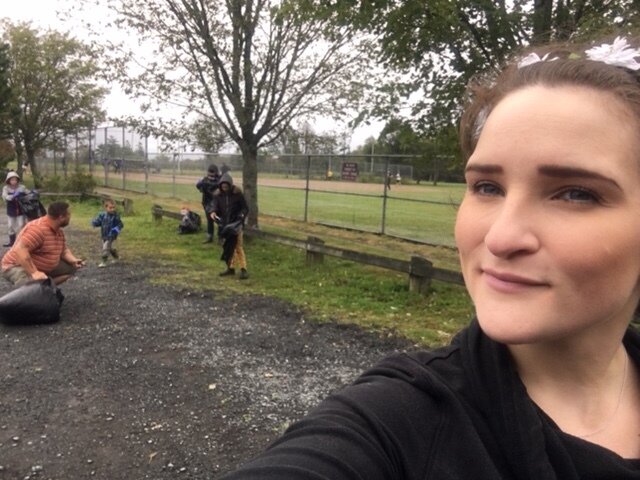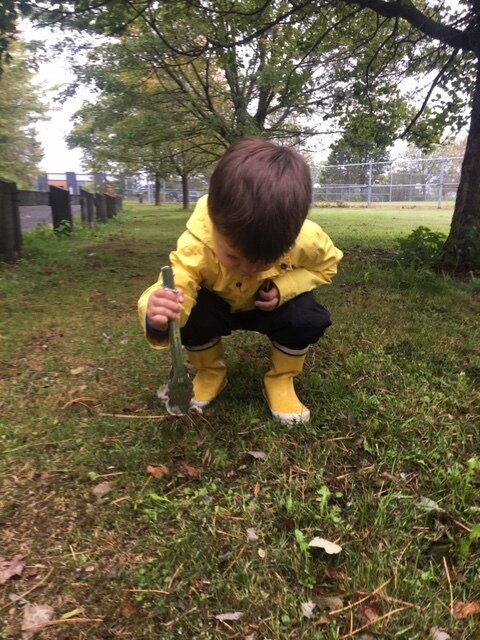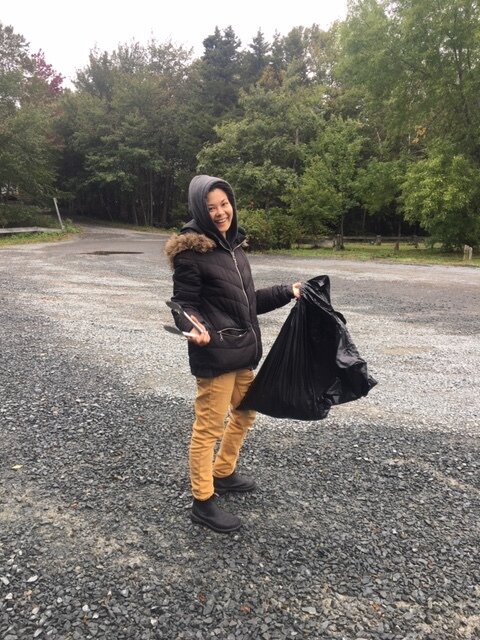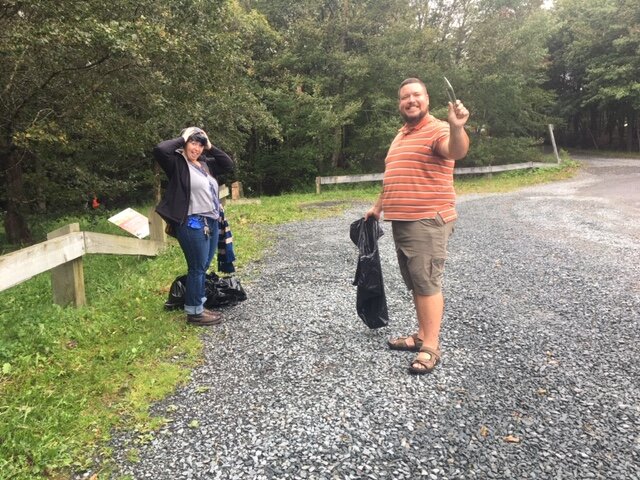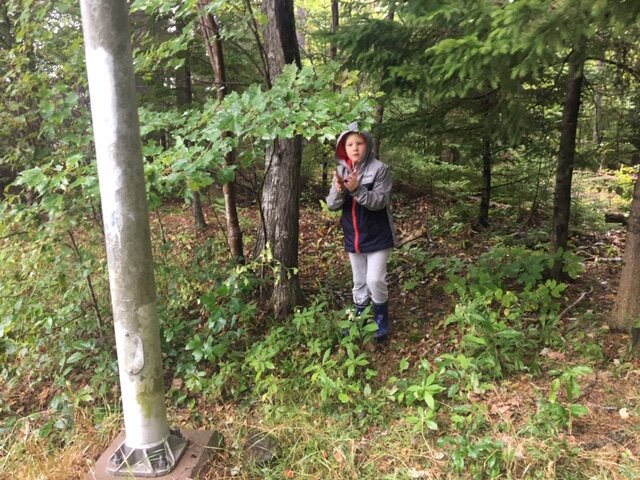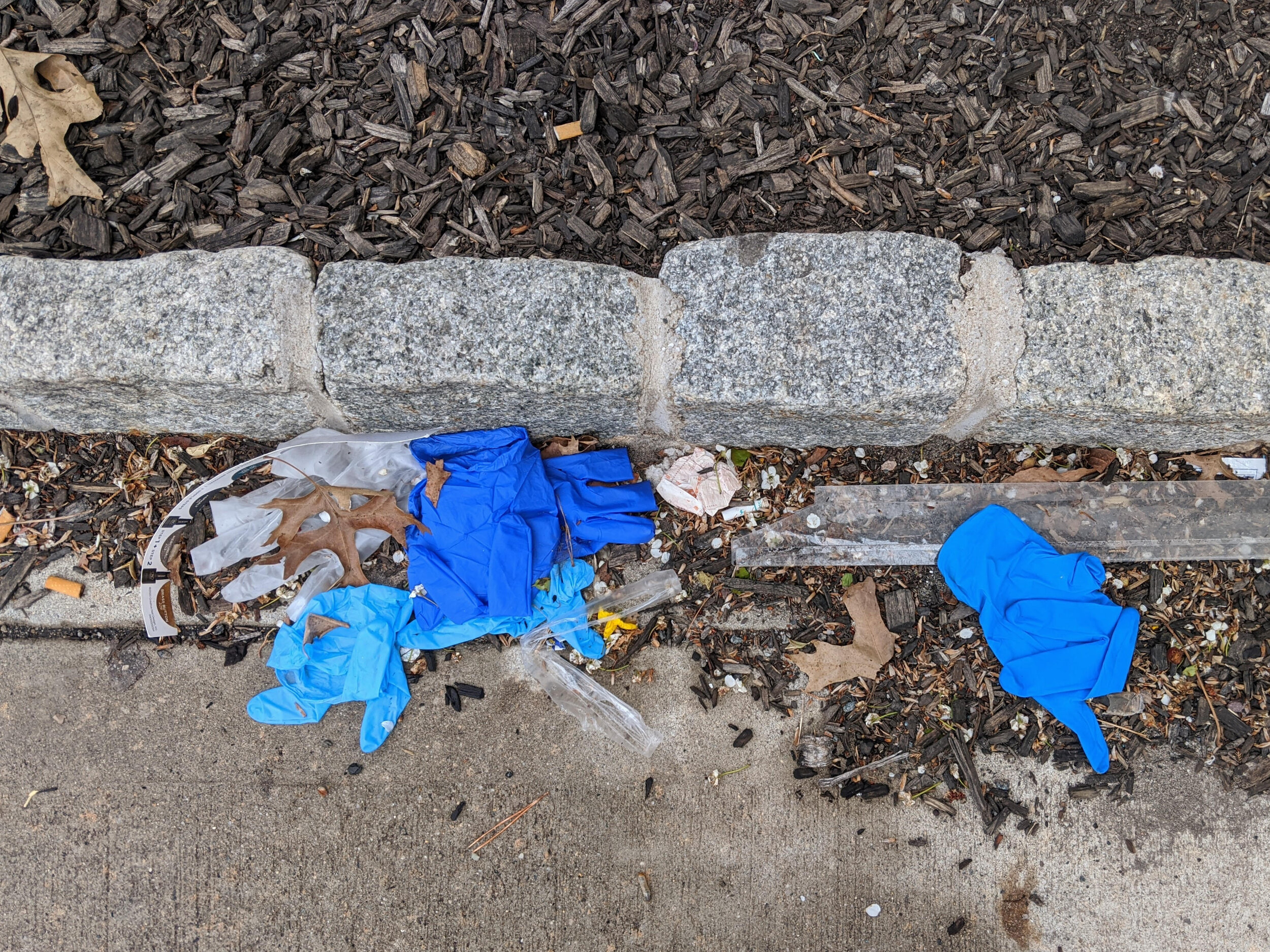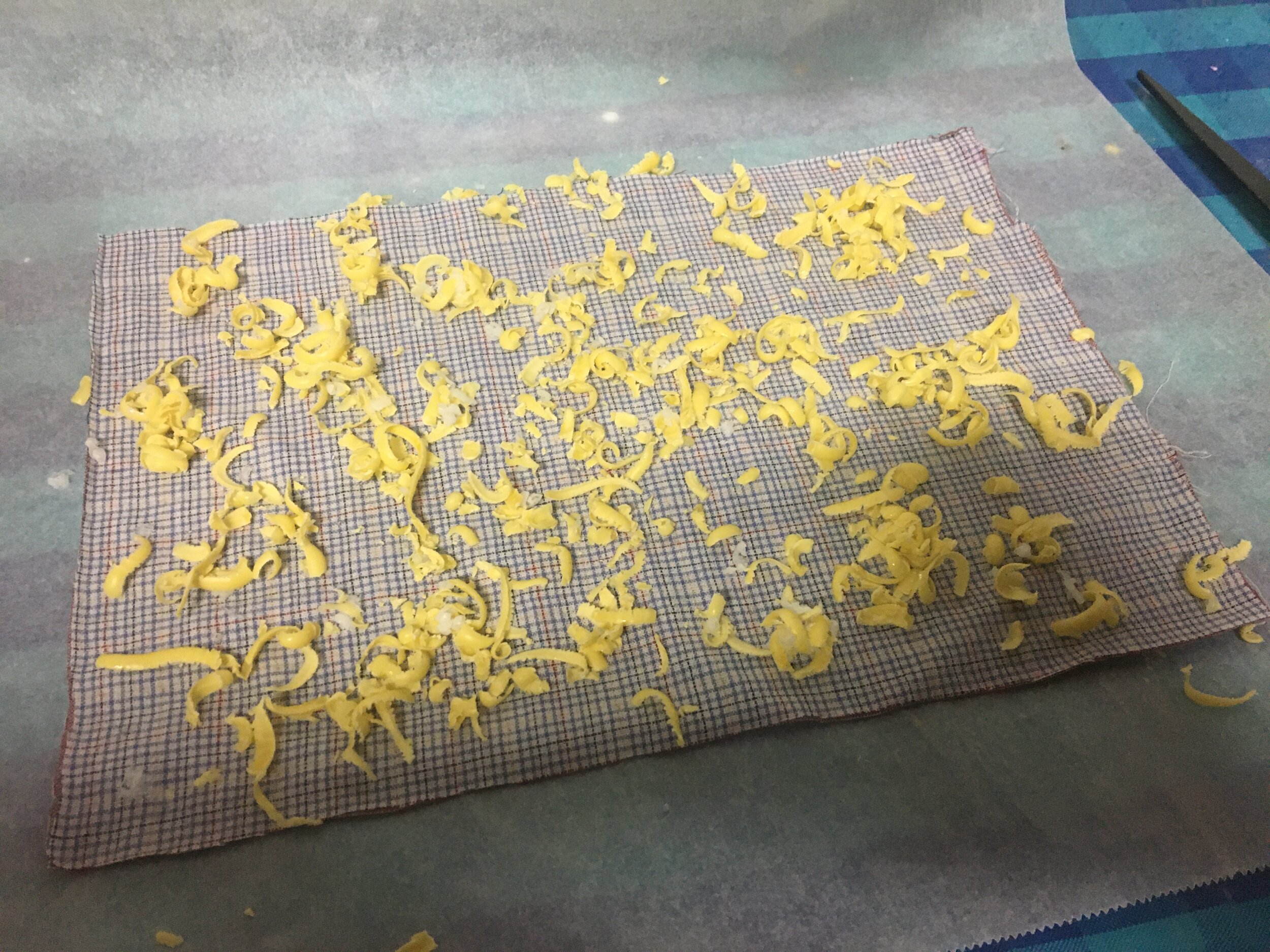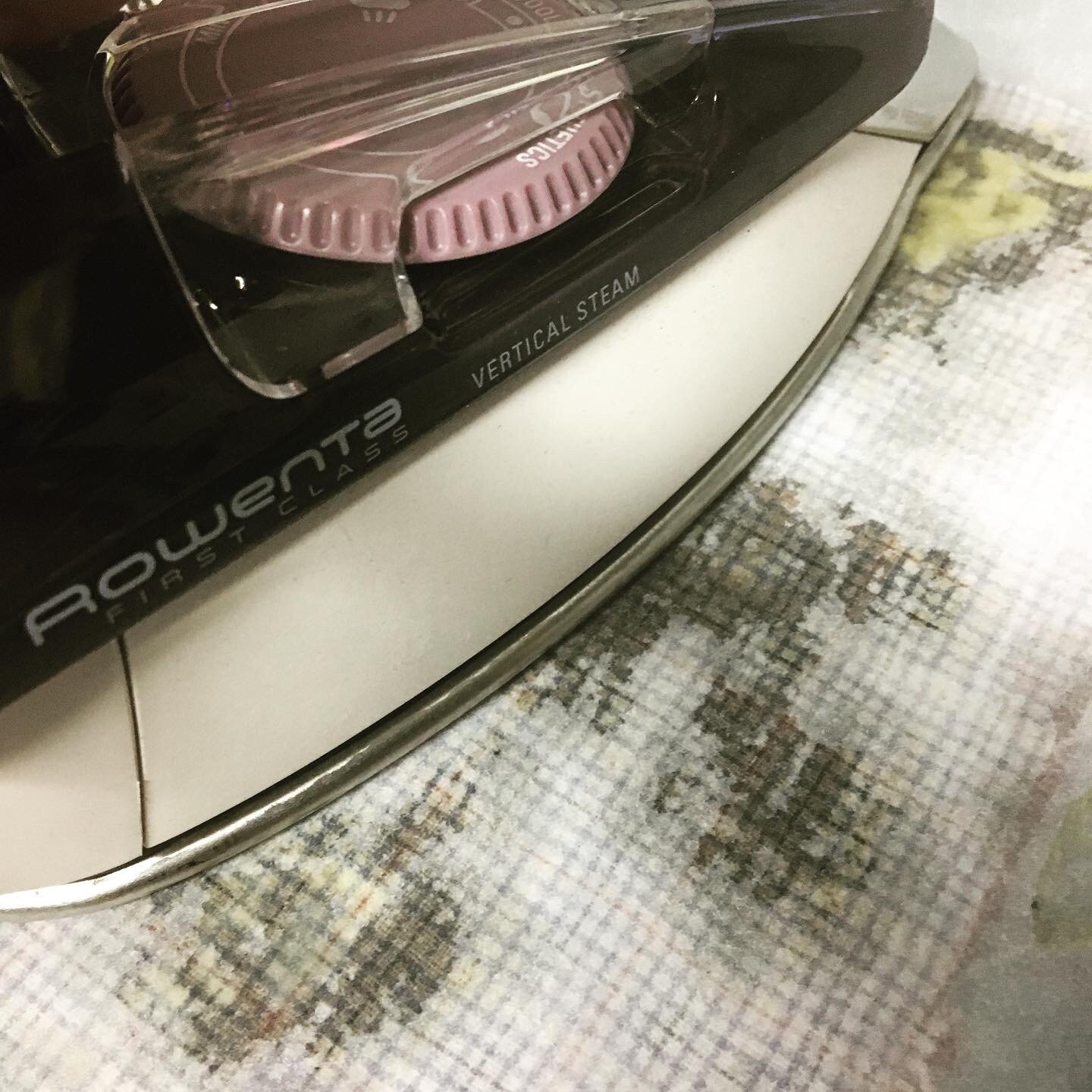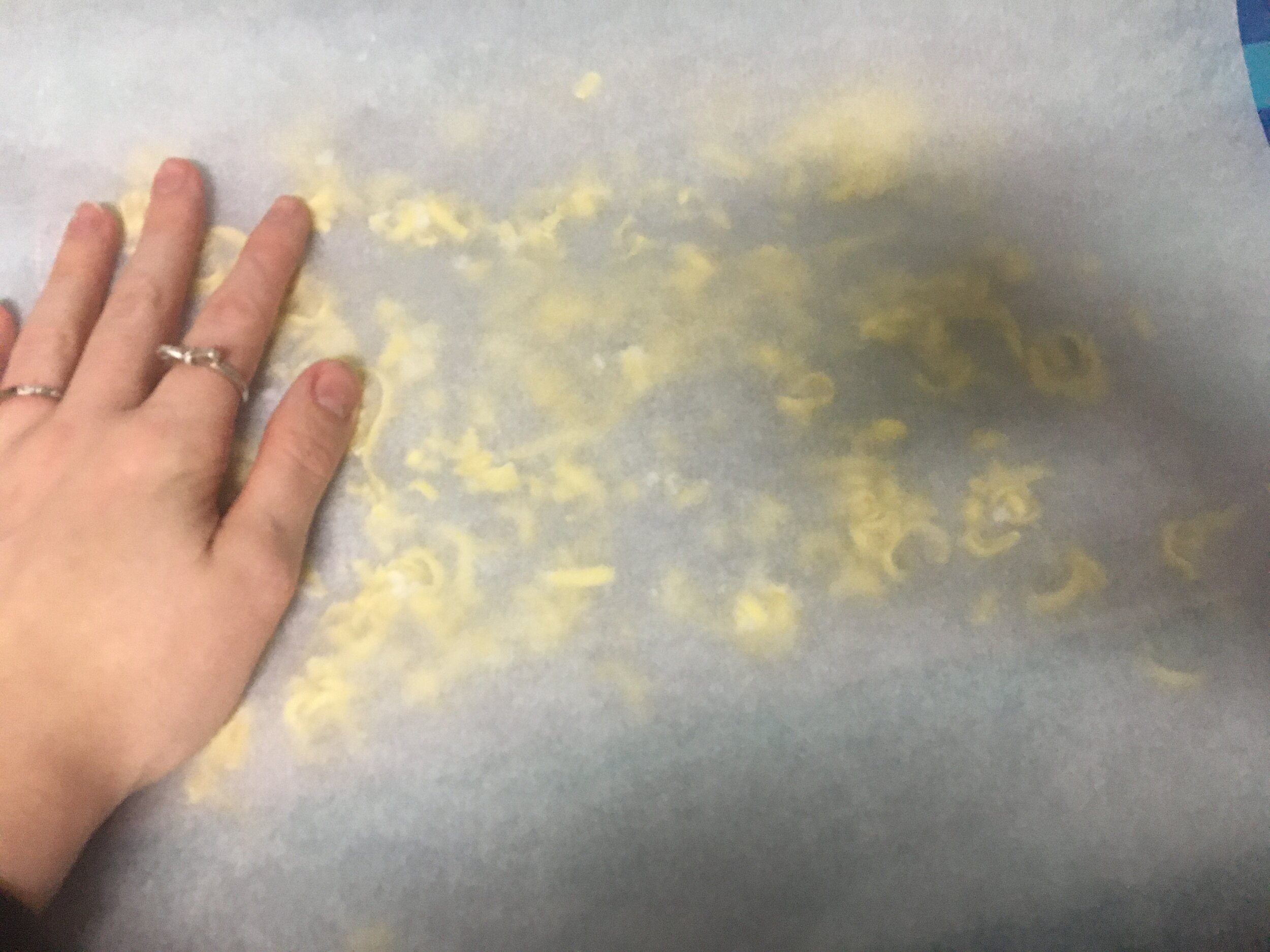
BLOG
Druids Against Racism
The Grove of Nova Scotia Druids holds a longstanding value of upholding and working toward justice for all. We are a caring community, welcoming and respecting diversity, and working for social justice in our Grove and in the world. We acknowledge that the process is not always flawless, and we are committed to continuous improvement. We believe we must examine racism beyond the actions of individuals, for it is embedded in the very fabric of our society.
Recent events have compelled us as a group to examine and act against the multifaceted nature of racism. We are resolved to explicitly and publicly affirm our identity as an anti-racist group. We are shocked by the actions of our fellow man and committed to working with others toward an equal and fair society. In the end, we are all, after all, just distant relatives of each other, family that happened to be living in another town.
Blessed be
The Five Fairy Mounds of Nova Scotia
From the Dark Ages on, people have talked about fairy mounds. The home of the elusive sidhe (although people today call the fairy people sidhe, they used to be called aos si, and their sithen used to be sidh). These mounds or sithens are the dwelling place of the fairies of old. You know the legends of these mounds in the British Isles, but did you know that prior to the arrival of the Europeans to Nova Scotia, there were FIVE fairy mounds in Nova Scotia? In an earlier post, I talked about the fairy mound that was at the sight of current Inverness, Nova Scotia. The town was literally built atop it. But there were five in total. Also, interestingly enough, they are widely spaced across the map.
While the first mound was at Inverness, the second mound was within Dartmouth. Its exact location a mystery, only that the city built atop it. The third one was near the Wilkie Sugar Loaf Mountain in Cape Breton. The fourth one was located in the Dagger Woods area in Antigonish county. The fifth and last one was in the Kejimkujik Lake area. This last one is fairly interesting as the common belief held that it wasn't fairies, but rather pixies that lived there (pixies being much smaller than fairies, but pixies and fairies are also enemies). The Kejimkujik mound was closely studied by a famous Nova Scotia historian and author William Richard Bird.
The Dagger Woods mound in Antigonish was the sight of an abduction. A young married man, on his way home from a local "drinking establish" was captured and held for three days only to be released on the fourth. His wife was suspicious that he was spending his time with a former paramour, but under repeated questioning, he told his family and friends that he had no memory of the event. No memory at all.
These mounds and the people therein were well known to the Mi'mkaq people of Nova Scotia. They called them Mikmwesuk and believed them to have magical powers. Mi'mkaq people generally avoided these areas as the Mikmwesuk was said to be fond of playing tricks on people. Although they do also tell stories of people that were aided by the "little people" as well. Does that not sound familiar? Like the fairies of Europe?
The existence of these mounds has been documented in several books, long out of print. The question that remains is just what happened to the mounds? Are they still there? Have they been vacated? Or do the fairies/pixies still appear from time to time, leaving mischief in their wake?
Story from https://www.facebook.com/nscryptids/
Walks aren’t canceled!
And neither is protecting the planet. Here are some photos of a few of our members doing roadside/community cleanup in social isolation.
It is hard to think that normally around this time of year we would all be getting together for hot chocolate and a roadside cleanup but, due to the current climate the best we can offer is family pickups and fun photos.
Don’t be afraid to safely engage in your normal activities. Just because a lot of things are on hold doesn’t mean that caring has to be.
Blessed be
Covid-19 & Waste Reduction
If you are anything like me, you are trying to cleanse your brain of all the terrible things happening in the world by checking out the small positive articles online. Articles about being able to see the fish in the rivers of Venice, news reports about being able to see the Himalayan mountains without smog. It’s incredible to think that we only had to take a small break from our daily lives before these things started to present themselves and the earth started to repair itself.
But, as I watch those marvelous things happen I look around at my local community and see disposable masks, gloves, and wipes littering grocery store parking lots. It sickens me to my core. I try to remind myself that these people are afraid and being callous but it’s not helping. There are places where disposable gloves and masks are a complete necessity and we all know that. However, throwing these things on the ground when you’re finished with that is not the answer. There is going to be a massive environmental impact just from the increase in medical equipment and PPE. Let’s just think about that for a moment, even with that massive increase good things are happening all over the globe. More animals and more plants; cleaner air and holes in the ozone repairing themselves. We can do this! We can have an impact!
As I look at my hand sanitizer and Lysol wipes I think to myself that I need to combat in other ways right now… Yes, these things are a need sometimes but not all the time and I want to talk about what we can do even when we are stuck home and scared
Reducing home waste is always on the mind but we can easily lose track of those goals when things get hectic or scary. Here is a list of simple things we can all try:
Glove-less
If you can go without gloves, do it. Wash your hands properly and often. Hand sanitizer is not as effective but will work in a pinch as well to keep everyone safe and happy.
Cloth and Disinfectant
Rather than single-use disinfectant wipes, use a cloth and bottle spray where safe.
Upcycle!
It’s very easy to fall into the online shopping trap right now. If you are home and you have spare time try upcycling a few things rather than buying new. It can help the planet AND give you a project which is great for mental health.
Shop local.
A lot of your local shops have come up with ways to do contactless and curbside orders. Skip amazon if you can support a neighbor.
Garden!
This is a great time to help the bees and to learn a new skill. I love gardening but with more time this year, I am planting new things to see how they fair in my yard.
Cook
Cook more or skip the plastics. Lots of people are ordering in to support local restaurants. It’s a beautiful gesture but remember each meal comes with plastic forks, knives, spoons, and straws you just don’t need.
Compost
Compost and reduce your waste. If you are home and have more time this is a great time to do more composting and meal planning. With a little forethought and perhaps a list you can reduce what you are even offloading into the compost. For example, this week we had tacos on Tuesday and use the leftover meat to make pasta sauce. No waste AND yummy sauce.
Water Conservation
You can still save water. I know it is a scary time and we all want to be as safe as possible but we don’t need to let the water run while we wash our hands and brush our teeth for the most part. Maybe it’s unnerving when we’ve just come back from the store or outside of the house but if you are milling around your own space and no one has been in or out, you are likely safe to turn the tap off while you scrub.
Power Conservation
Be mindful of your light usage. It’s easy to lose track of this in an office but a lot simpler to do at home. Whether you are working or not keep an eye on your lights.
Heat Conservation
Dress warmly. Keep your thermostat lower and pop on two sweaters. It’s not a fashion faux pas... who is going to see it anyway?
Recycle
Don’t forget to recycle. More time at home means you can be more mindful of your bins. Make it a challenge to see how little garbage you put out for pickup day
There are lots of ways we can have a positive impact on this pandemic situation. Let’s keep Mother Earth in our hearts and in our minds.
Blessed be.
How to grow an Oak tree.
We are an incredibly fortunate family to live in an urban setting with several large Oak Trees in our yard. One of the issues with this though is the astronomical amount of acorns that litter the ground every year. One thing I have always wanted to do was grow our own oak tree from one of those thousands of acorns that we crush underfoot year after year. So after several failed attempts we finally found some success! So here on Earth day, you should try your self and here are some instructions.
Collect acorns in early autumn. Acorns are best harvested in the early-to-mid autumn before they have fallen from the tree. Choose acorns that are free of worms, holes, and fungus. Suitable acorns should be brownish with slight tinges of green remaining, though the appearance of acorns can vary based on the type of oak tree they come from. A good general rule is that acorns are ready for picking when they can be removed from the cap without tearing them.
Note that the cap is not part of the acorn, but a (separate) protective covering. By removing the acorn from the cap you are not damaging it unless you tear the acorn itself.
If possible, look for suitable trees in the summer. You'll want mature trees whose acorns are easily-reached via a ladder or with a long pole.
Some oak varieties, like red oaks, have acorns that take two years to mature, rather than one. As you pick suitable trees in the summer, keep this in mind - the acorns on some oaks will be ready in the fall, while others won't be ready until the following year.
2. Perform a "float test." Put the acorns that you've harvested, without caps, in a bucket of water. Allow the acorns to settle a minute or two. Discard any acorns that float - these acorns are bad.
An acorn may float because a worm or grub has burrowed into it, creating an air hole. Similarly, a fungus can make the acorn float.
If, at any point, you notice that an acorn is soft to the touch, discard it as well. Soft, mushy acorns are rotten.
3. Hibernate the remaining acorns. Take the "good" acorns out of the water and dry them off. Place them in a large zipper bag with damp sawdust, vermiculite, peat mix, or another growth medium that can hold moisture. You should be able to fit up to 250 acorns in especially large bags. Put the bag in the refrigerator for a month and a half or longer - as long as it is needed to germinate the new oak.
This process is known as stratification, which is simply exposing the seed to cold temperatures, mimicking the natural conditions that seed would experience had it fallen to the ground. This primes the seed for sprouting in the spring.
Periodically check on your acorns. The medium should be just barely moist. Too moist, and the acorns may rot. Too dry, and they may not grow.
4. Keep an eye on the growth of your acorns. Even when stored in the refrigerator, most acorns will begin to germinate in the presence of moisture. The root end may begin to crack through the shell around early December (late fall, early winter). Whether or not the root has cracked through, the acorn is ready to be planted after about 40-45 days of storage.
Handle your seedlings with care - the emerging roots are easily damaged.
5. Plant each acorn in a pot or container. Obtain fairly small 2 inches (5 cm) diameter gardening pots (or, if you prefer, large styrofoam cups or milk cartons), for your plants. Fill these with a good quality potting soil (some sources also recommend adding milled sphagnum moss). For watering purposes, leave about an inch (2.5 centimeters) of space at the top. Plant your acorn just below the surface with the root facing down.
If using a styrofoam cup or milk carton, poke holes in the sides of the cup near the bottom so that water can escape.
If you prefer, you can also try just burying the acorn in the yard. Bury the root in a shallow hole and gently tuck the acorn to one side on top of suitable rich, soft soil. This will only work if the taproot is already well established, long, and has detached adequately from the acorn. Be warned - this leaves the seedling vulnerable to mice, squirrels, etc. It's best to wrap a cage around the seedling to protect it from animals.
6. Water your seedling. Water your plant until water comes out of the holes at the bottom of its container. In the coming weeks, water frequently, never allowing the soil to dry out. In this stage of their life, keep your seedlings indoors. Place them on a southern windowsill, where they can absorb the winter sun. You may not notice rapid above-ground growth right away. This is because, during the first stage of its life, the plant is developing its taproot below the surface of the dirt.
If you live in the southern hemisphere, place your seedlings on a northern windowsill instead.
If your seedling isn't getting much sun, use a supplemental indoor grow light to provide more sunlight.
Now, these instructions have come from Wiki How and we deviated ever so slightly at step 5. From 4 on we followed the instructions from another suggestion about using an Acorn vase. There are several options out there, one being this stunning vase from Svenskt Tenn. We personally were able to find a vase from Ikea. After we get some solid rooting in the vase we will return to step 5 and plant in a pot. We have a huge beautiful Oak in our yard we planted on the day of our handfasting which has well over 10 feet tall now.
Fun Acorn facts
There are about 600 species of oak that produce acorns, in the genus Quercus.
Oak trees are pollinated by the wind.
A common motif in home decorating and heraldry, acorns symbolize strength, honor, longevity, life, and fertility.
Acorns contain tannins, which are bitter tasting and interfere with an animal's ability to metabolize protein. Acorns can be toxic to horses and cows.
In early human history, acorns were an important food source. Today, they have largely been replaced by grains.
Oak trees produce acorns annually. Trees in a region synchronize their acorn production, and the volume of acorns can vary dramatically between years.*
*This variation affects animals, such as deer, mice, squirrels, and jaybirds, that rely on acorns for food and causes “boom and bust” cycles in their populations. While weather conditions, such as drought, can affect acorn production, research suggests other possible reasons. One hypothesis is that variable acorn production is a strategy that evolved in response to seed predation. In “boom” years, more acorns are produced than can be eaten or stored by animals, allowing some acorns to grow into trees. Another hypothesis is that oaks are trying to maximize pollination efficiency by flowering and releasing pollen at the same time (which results in greater acorn production). I noticed there were substantially fewer acorns on the Stockholm University campus this year compared to last year.
Self Isolation
Though I am still working as part of an essential service I know there are a lot of people stuck at home right now and I know that it can be really stressful for some people.
Because of my work, work schedule and general nature I love being home. I have lots of hobbies and I enjoy them all very much. I am just one of those people who “never get bored“. But I live with an extrovert! And I worry about the toll that social distancing and isolation will have on his mental well-being. We talk about it often and I think we have it under control but I thought this might be a good time to write a little blog about things that are definitely not canceled.
House cleaning and house cleaning rituals. This is a great time if you are feeling well enough, to give your house a great big clean. Start from top to bottom and make sure that you focus on what you’re doing and do it with intent. If it is warm enough, open up your windows and let the fresh air in.
If you are feeling a little isolated from your spiritual community, connect with some online rituals. Even if you have to host one yourself, I am sure that there are those out there who will greatly appreciate it. There is no sense in giving up your spiritual connectivity for the sake of social distancing. There are other ways to make it work.
If you are not in the mood to perform a ritual, perhaps consider sharing some of your practices online. This can be a great way to connect and gain inspiration.
Being forced to “stay in“ is a great time to brush up on some studies. For example, members of the ADF have what is called the Dedicate Program. There are many similar programs to this and it’s a great use of time if you are looking to expand your knowledge.
Maybe it’s not warm enough to get outside but you can certainly tend to your house plants. Connect with the plants as a means of connecting to nature and find peace.
Compost maintenance! If it’s not frozen, try to give that sucker a turn. You will thank yourself when the gardening season rolls around.
This is a great time for extra self-care and meditation. A little TLC goes a long way.
Start a diary. This one may seem a little too obvious but someday we will want to look back on these experiences and you may not remember everything that went on. Daily diaries also have therapeutic value and it is important to take care of your mental well-being while in isolation even if you enjoy being alone.
This is a great time to connect with your food. I am sure we have all heard of the Kitchen Witch. working in the kitchen can be a great way to connect with yourself spiritually if it is something that you enjoy. It is definitely a great way to connect with food. You might find yourself learning some new skills or new spell work. And hey, If you end up making a big meal or have a little extra consider spreading it around to others who may have fewer resources or abilities.
walks are not canceled! Get out in nature! You can practice safe social distancing with people outside very easily. Always keep hygiene in mind and consider carrying a bottle of sanitizer. But this is a great way to recharge.
Lastly, and this one is difficult for me too, sometimes we just have to wait.... this too shall pass and the more we keep calm and follow health authority guidelines the faster it will all pass.
Blessed be in this most trying of times. Take care of yourselves and each other.
DIY Beeswax Wraps
Last night I did something VERY fun.
We are all trying to do a little better with our waste. I am no where near “Zero Waste” but I am going to keep trying. I have been intrigued by Beeswax Wraps for a while now and decided I would try to give it a DIY. After much digging I decided the best method for me was to try and iron. let me show you how it was done 😊
What you’ll need:
100% cotton or linen
Scissors (preferably pinking shears)
Beeswax
Coconut oil
Pine resin (if you can find it, helps with stickiness)
Firstly, lay out some parchment paper to protect your surfaces. You should try to go much larger than your fabric so you don’t get wax on your tabletop.
Next, grab your fabric and make your cuts (you can see from the photos I upcycled an old shirt, this is a great option), if they are a bit jagged, that’s ok, you can trim once its hardened too.
Then, grate your beeswax, coconut oil and resin over the fabric. Place another sheet of parchment paper over the top and begin to iron. I set my iron to wool, that’s where I got best results. Move the iron slowly and mindfully, spreading your wax mixture all over the fabric cuts.
When you are confident you’ve got full coverage, you can hang it to dry (be careful! Its hot!) Repeat with other cuts.
Once dry (hardened), check your sheets to make sure they are fully saturated in wax, if you think you can still feel the texture o the fabric, get some more wax and go over that area again. Repeat as needed.
Alter Décor and Expression
There isn’t really a way to do this right or wrong. There are standards…
Well to the East
Fire to the South
Tree to the West
But apart from that, ADF Druids (and the like) usually decorate their alters in ways that makes them feel connected, happy and spiritual.
You can use seasonal herbs and flora or candles and crafts. Most people incorporate symbols or effigies, but I will tell you my family alter is often quite simple and apart from the well, fire and tree I usually end up decorating it with things I’ve made. I mean, you always want beautiful flowers around Ostara but here in Nova Scotia you would be hard pressed to find the ground though all the snow let along a flower! I tend to make paper flowers ( I love papercraft and I build with intent), we have homemade candles and herbs that we often grew in our yard at some point.
Your alter need not be complex or garish unless you wish it so. Use what represents you and your deities.
If you are looking for inspiration, here are a few ideas:
Statuary
Precious books
Crystals
Ogham
Runes
Your well, fire and tree representations
Incense and holder
Candles
A tablecloth
Herbs
Flowers
Magical tools of any kind
Your chalice
Your offering bowl, plain or otherwise
Homemade (or lovingly made) crafts
Seasonally appropriate colours or figures (eg: reds and browns for Mabon etc.)
This is a very personal process and you should always do what resonates with you and your needs at the time. Be sure to cleanse whatever you place on your alter and always focus your intent as best you can.
Blessed be and happy decorating.
Karen
Crystals and You
A few months ago I found myself really drawn to crystals. This had been a part of my exploration when I was young but I had moved on from it and thought it felt juvenile and hokey to me. “Only new age yuppies use crystals” I thought….
After more than a month of pondering, reading, window shopping and continuously telling myself I would “just get over it” I finally went to a shop on the far side of town to get me some rocks….
I brought them back to work (it was a lunch hour) and sat with the stones.
What had I just done?
How could I be so silly?
We didn’t have money for this, there are bills to pay and I am throwing money at bits of rock!? DAMMIT Karen!
I held the weighted stones in my hand and reflected on my purchase. It really wasn’t much and I had been eyeing them for a while. I decided to meditate with the stones in my hand and just embrace that I had done this and, weather it was a good purchase or an impulse buy I was now the owner of a big ol’ piece of Clear Quartz, a small chunk of Bercciated Jasper, and a bit of Smokey Quartz, because I just love black. As I rolled the rocks around in my hand the embarrassment lifted. I thought about the fact that it was kind of nice to feel the smooth and sharp edges, it really kept my focus and helped my mind form wandering.
Over the next few weeks as I would finish up my lunch hour yoga I would grab for my crystals and roll them in my palms. It felt good, I was connecting regularly to my spirituality and these tools were helping me get there. It can be so easy between an office environment and a busy home life to forget about taking time for your mental and spiritual well being. But these crystals helped me get there. No shame.
The moral of my little post here is that you shouldn’t be too hard on yourself. Of course you never want to put your base needs at risk by over indulging in any one pillar of your life but if something resonates with you and you can do it responsibly, don’t feel like you should deny yourself based on past or others perceptions. As with all things in life, you will have need for different tools at difference times. Tools may come and go but the time you put into you and the connection you feel in those moments is everlasting.
Blessed be.
-Karen
Park cleanup
This weekend we had a fantastic cleanup at a local park. Even though it rained (it always rains here) we had a great turnout and managed to collect 3 full bags of garbage from around the small park.
The experience was lovely, we walked a joked in a group and discussed ways to make it more fun and appealing in future. We were privileged to have a visitor who was knowledgeable in fungi and had done several park cleanups themselves. They suggested that we link a learning walk with the nature clean up and try themes for the events.
After a couple years of working hard to get the right permits we finally, gave up, got out and just did the right thing. We had gloves, tongs and bags along with great attitudes.
Thank you to everyone who made it out, lets hope this is the first of many cleanups.
Blessed be.


